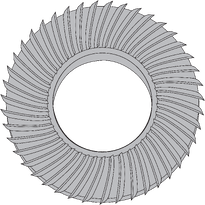11 Ways Hard Turning Reduces Your Costs
 Grinding does–and likely always will–have a place in manufacturing, as all components can not be hard turned due to tolerance requirements and the surface integrity of the part.
Grinding does–and likely always will–have a place in manufacturing, as all components can not be hard turned due to tolerance requirements and the surface integrity of the part.
However, hard turning does offer distinct advantages when machining, including price. Compared to grinding machines, lathes are relatively inexpensive to purchase. Higher level grinders can perform multiple operations but are often more expensive to operate due to setup and cycle times and require more support equipment, such as balancers and dressers. With lathes, you get reduced machine tool cost which adds up to greater productivity, better production control, shorter throughput and greater profits.
Hard turning is a viable process that has real and measurable economic and quality benefits. This is particularly true with a machine tool that has a high level of dynamic stiffness and the necessary accuracy performance. The more demanding the application in terms of finish, roundness and size control, the more emphasis must be placed upon the characteristics of the machine tool.
The following list describes 11 ways Hard Turning can help reduce your costs.
You can “soft turn” and hard turn on the same machine.
- It has a smaller floor space requirement.
- There’s a lower overall investment.
- Metal removal rates are 4-6 times greater.
- You can turn complex contours.
- Multiple operations can be performed in a single setup.
- It allows for low micro finishes.
- It’s easier to configure changes.
- There’s a lower cost tooling inventory.
- There are higher metal removal rates.
- It’s easier on waste management (chips vs. “swarf”).
 |